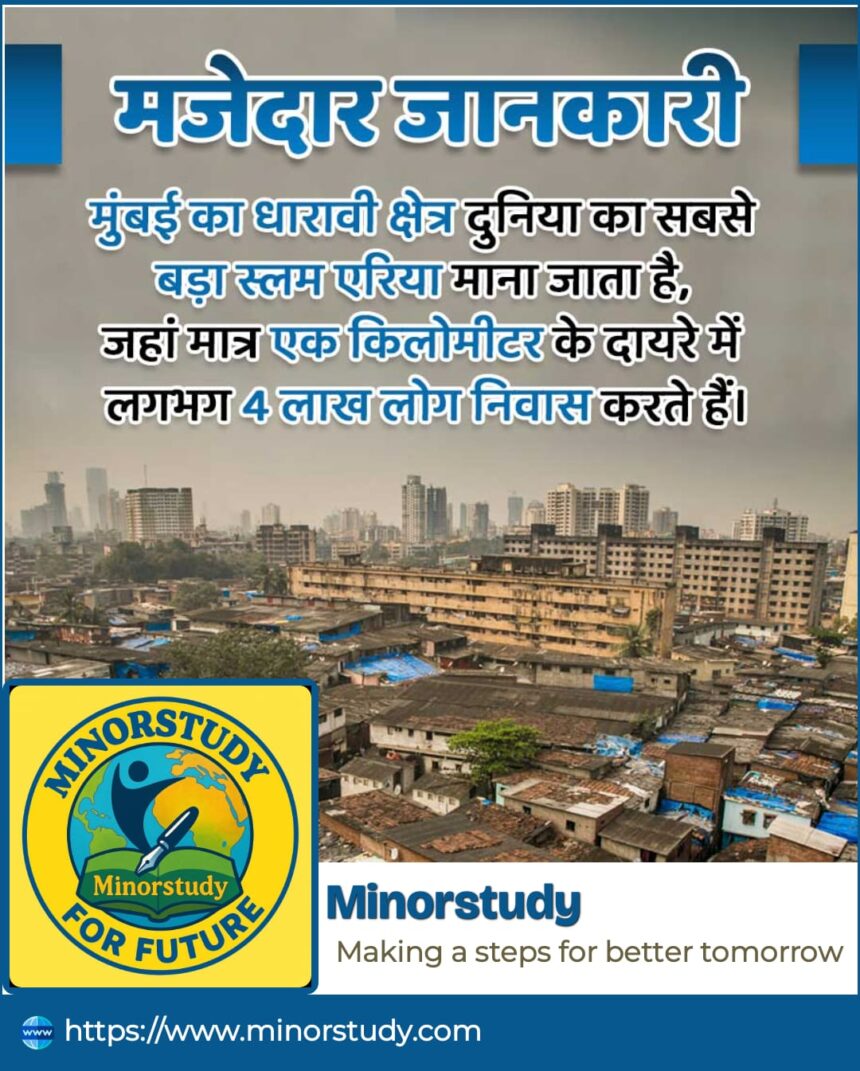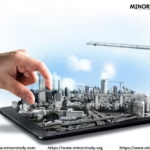🏙️ 7 Surprising Truths About Dharavi – The World’s Most Resilient Slum with a Powerful Spirit
🧭 Introduction: Beyond the Slum Stereotype
When people hear the word “Dharavi,” many imagine overcrowded lanes, poverty, and chaos. But behind the cramped houses and narrow alleys lies a powerful story of human resilience, entrepreneurship, and community.
Located in the heart of Mumbai, Dharavi is often labeled the largest slum in Asia, and one of the densest places on Earth. However, the real essence of Dharavi is not misery—it’s resourcefulness, strength, and creativity.
Let’s take a deep dive into Dharavi’s history, surprising facts, socio-economic role, spiritual energy, community life, and its importance in daily and national life, in a human-centered narrative.
📜 History of Dharavi: From Swampland to Enterprise Hub
Pre-1880s: Dharavi was originally a swamp and mangrove forest on the outskirts of Mumbai.
In 1882, due to city expansion, poor workers—especially fishermen, potters, and tanners—were relocated here.
Dharavi became a settlement of displaced artisans and low-income workers, evolving into a massive informal economy.
Over the decades, immigrants from Tamil Nadu, Uttar Pradesh, Bihar, and Gujarat came in, building a unique multi-lingual, multi-religious ecosystem.
📈 Fascinating Facts About Dharavi
| Fact No. | Surprising Truth |
|---|---|
| 1 | Over 4 lakh people live in just 2.1 sq km, making it one of the most densely populated places globally. |
| 2 | Dharavi has an estimated annual economic output of over ₹6,000 crores (US $1 billion). |
| 3 | Home to more than 20,000 micro-factories and small-scale businesses—from leather to pottery. |
| 4 | Bollywood movies like Slumdog Millionaire and Gully Boy were filmed or inspired by Dharavi. |
| 5 | Dharavi has schools, clinics, banks, temples, mosques, and churches, showing community balance. |
| 6 | It’s one of the most literate slums in India with a 70%+ literacy rate. |
| 7 | Dharavi was internationally praised for its efficient COVID-19 response in 2020. |
📅 Timeline: Evolution of Dharavi
| Year | Event |
|---|---|
| 1882 | Slum settlement begins due to displacement |
| 1930s–50s | Pottery and leather industry rise |
| 1970s | Surge in migration from Tamil Nadu and Bihar |
| 2009 | Featured in global media through Slumdog Millionaire |
| 2020 | Becomes a model of COVID containment, globally recognized |
🌟 Why Dharavi Is More Than a Slum – The Real Significance
1. Economic Powerhouse
Dharavi may lack luxury, but it produces billions in goods—leather bags, garments, food, pottery, recycling, and more. Every narrow lane is a factory of dreams.
2. Symbol of Survival
Despite harsh conditions—poor sanitation, water shortages, and space constraints—people thrive with dignity, courage, and faith.
3. Cultural Harmony
Dharavi is a true melting pot of religions and languages. Hindus, Muslims, Christians, and Buddhists live together peacefully, celebrating festivals like Diwali, Eid, Ganesh Chaturthi, and Christmas side by side.
4. Education and Progress
NGOs, community centers, and government efforts have made education accessible. Many Dharavi-born children now study in global universities, break into tech, law, and medicine.
5. Women Empowerment
Women are active as entrepreneurs, community leaders, artists, and health workers. In Dharavi, women uplift families and drive local change.
6. Recycling Capital of India
Dharavi is known for its plastic, metal, and e-waste recycling hubs—contributing significantly to India’s sustainability goals.
7. Crisis Management Excellence
In 2020, while the world struggled with COVID-19, Dharavi’s local administration, doctors, and volunteers contained the outbreak through door-to-door care, isolation, and awareness.
🙏 Human and Spiritual Aspects
Despite its image, Dharavi radiates community spirit and soul. People pray together, eat together, celebrate together, and mourn together. It teaches us:
Resilience is sacred.
Faith doesn’t require luxury.
Community is stronger than concrete.
💬 FAQs About Dharavi
Q1. Is Dharavi the largest slum in the world?
It’s one of the largest, with over 400,000 people in 2.1 km². Some argue other slums like Orangi Town (Pakistan) may exceed in population, but Dharavi is densest.
Q2. Why is Dharavi important?
Dharavi contributes immensely to the economy, shows how slum residents innovate, coexist, and uplift, and challenges society’s view of poverty.
Q3. What are the industries in Dharavi?
Leather, textiles, plastic recycling, food processing, pottery, embroidery, and handicrafts.
Q4. Can tourists visit Dharavi?
Yes. Ethical, NGO-led slum tours help fund community education and health programs.
Q5. Is redevelopment happening?
Yes. There have been proposals for rehabilitation and redevelopment, though debates continue on displacement, equity, and sustainability.
🌍 Observance and Public Awareness
While there’s no official “Dharavi Day”, various organizations conduct workshops, clean-up drives, health check-ups, and cultural programs throughout the year to bring awareness and pride to Dharavi’s community.
Films, books, and documentaries have also brought global focus to this neighborhood—not for pity, but for appreciation and respect.
💌 Wishing Message to the People of Dharavi
🙏 “To the hearts of Dharavi—your strength, unity, and spirit are an inspiration to the nation. May your dreams shine brighter than Mumbai’s skyline.”
🌟 “You don’t need skyscrapers to stand tall—your willpower does that. Wishing every resident of Dharavi health, dignity, and continued success.”
🔑 Important Points to Remember
Dharavi is not a slum of despair, but a neighborhood of hope.
Over 20,000 small businesses operate daily, run by regular people with extraordinary drive.
Unity in diversity lives here—not as theory, but as everyday practice.
It’s time to reframe how society sees slums—as places of potential and purpose.
🧘 Impact in Our Daily and National Life
Dharavi shows us how to make more out of less—how to live, work, and evolve despite limitations.
It provides a model for urban informal economies globally.
Inspires a rethink on poverty, planning, and people’s rights.
Reminds us that real power lies in people, not structures.
🏁 Conclusion: Dharavi – A Slum That Teaches the World
Dharavi may not have tall buildings, wide roads, or parks, but it has something more powerful—human soul and social capital. Every corner speaks of innovation, resilience, and dignity. It deserves not our pity, but our respect, attention, and inclusion.
Let’s remember—true development isn’t just building higher—it’s about lifting people higher.
#Dharavi #MumbaiSlum #HumanResilience #UrbanPoverty #SocialDevelopment #DharaviFacts #IndiaUrbanStories #PowerOfCommunity #SlumRehabilitation #RealMumbai








